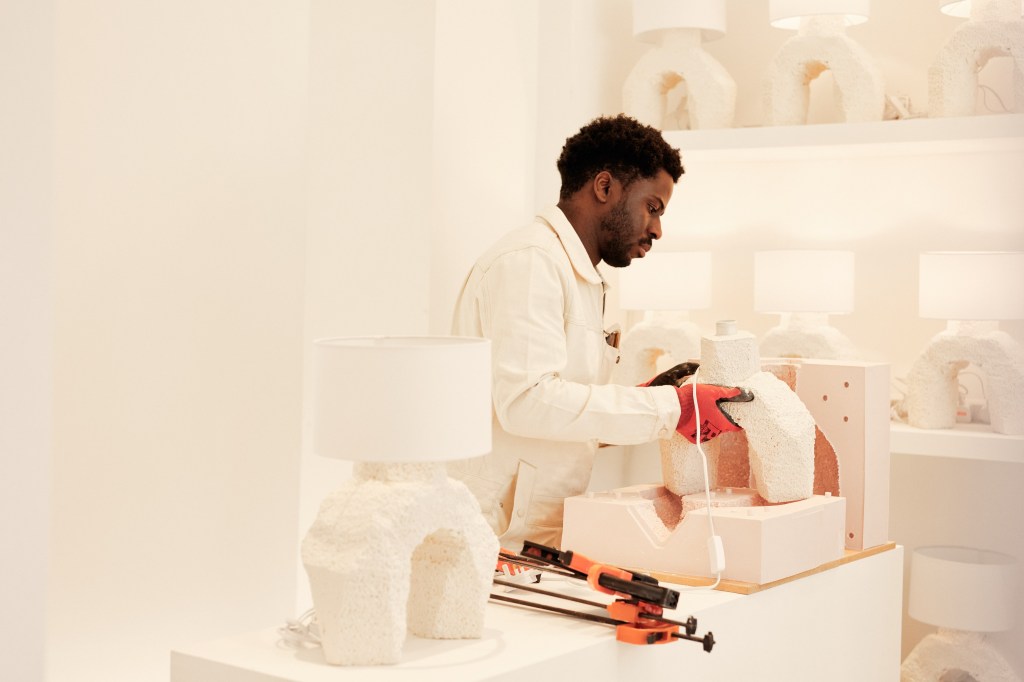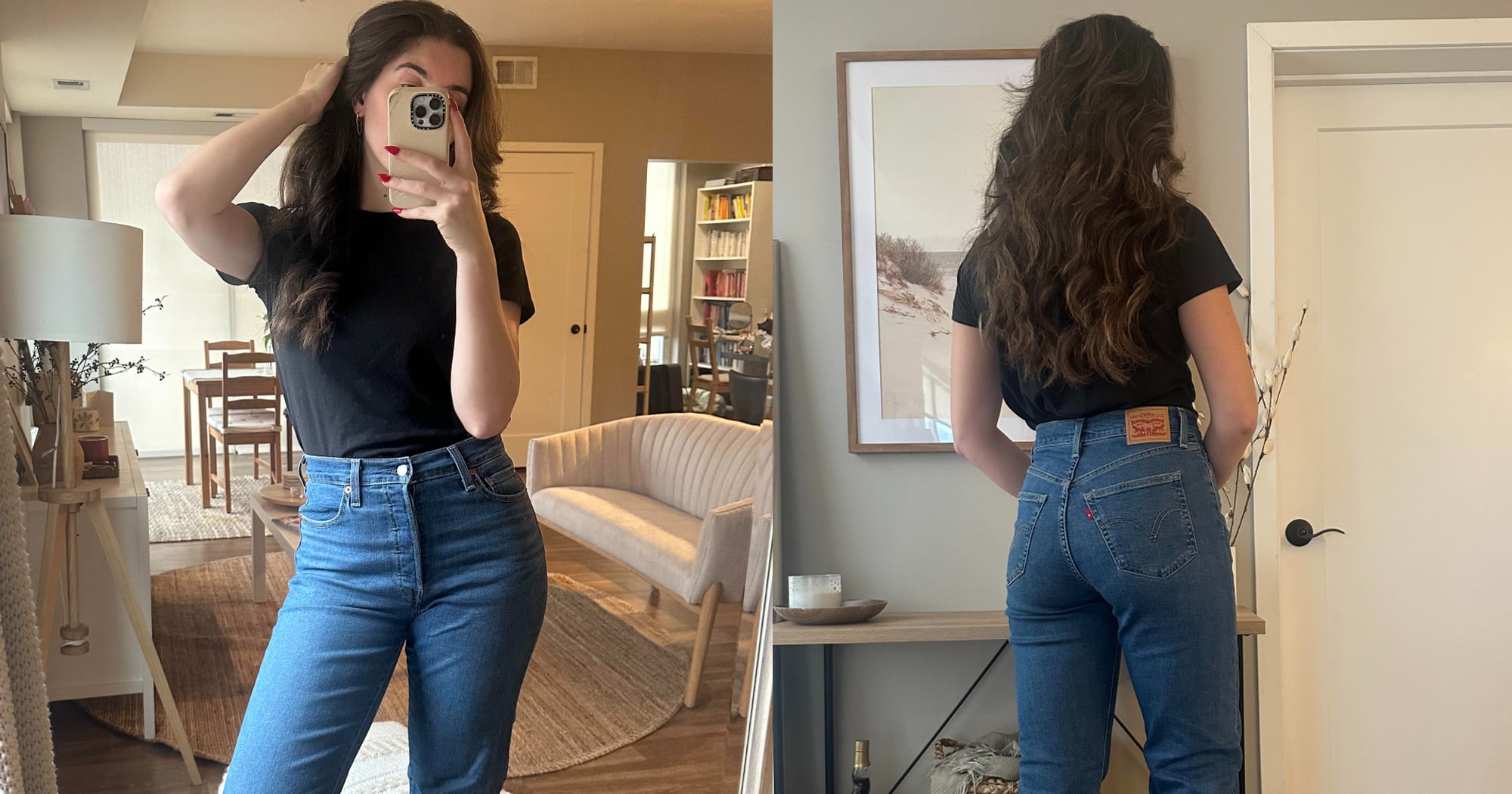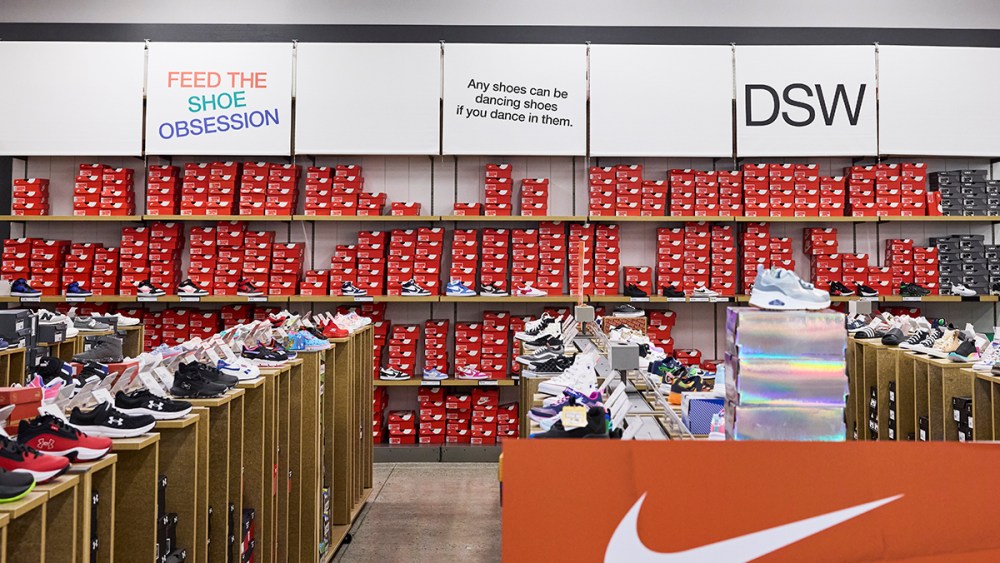When artist Tejumola Butler Adenuga first moved to London from Ogun State, Nigeria, the access to constant electricity made him feel like the future was full of possibilities.
“When the lights came on in Nigeria, I knew I had to press my clothes. Then, when I moved to London, the reality that I could iron my clothes at any time made me feel like there was nothing I could not do,” he reminisces.
At 29, his life has rapidly changed. Since moving to London as a 15-year-old schoolboy, he’s become a rising member of the U.K.’s creative Nigerian diaspora community, sometimes referred to as simply Butler Archive. His work perhaps first resonated on a global scale with his pointillist portraits of famed personalities like the late actor Chadwick Boseman and Lee Alexander McQueen, which he composed using photos gleaned from social media and the internet.
Adenuga’s color blindness led him to celebrate the use of black and white and focus on contours rather than shades, which in part distinguished his portraits — one of which was most recently featured in the exhibition “Portrait of a Top Boy,” a collection of 16 portraits from U.K.-based artists to commemorate the legacy of the characters of the Netflix series “Top Boy.”
Now, just two years after venturing into the world of furniture and lighting, he’s focused on testing the waters as an architect, taking his journey full circle with his first major project in Nigeria, with a rooftop restaurant in Lagos. The futuristic space will host a gallery for furniture, sculpture and installations to showcase just how far the diaspora has actually come.
“Our sole aim is to get seasoned Nigerian designers from the diaspora to integrate with this new physical landscape,” he says. Last time Adenuga was back home, he realized how much the cultural scene had changed when he found himself at an art show surrounded by 2,000 people. Things are changing at home and abroad.
“Artists are becoming new celebrities,” he points out, adding “a lot has changed, there are more conveniences, there is now a faster way to do things, especially when it comes to design and appreciation for art.”
From Adenuga’s East London studio, he designed his own renderings for the new space, which will break ground near Lagos this year. The restaurant, awash in beige, is adorned with rounded architectural features and meditative spaces that connect with the nature, flora and fauna of Nigeria.

A member of the Yoruba tribe — which in ancient times perfected the crafts of woodcarving, sculpture, metal work, textiles and beadwork — Adenuga’s vision was born during a new golden age of the Nigerian zeitgeist. The diaspora’s influence has spread worldwide in the fields of sports, fashion, film and music, particularly Afrobeats, which emanated from Nigeria, Ghana and the U.K. in the 2000s and 2010s. The sheer size of Nigeria’s diaspora population is also a factor, Adenuga says. According to the Organization for Economic Co-operation and Development, about one out of every four Africans as of today is Nigerian.
Fellow Nigerian and architect Olajumoke Adenowo, the author of “Neo Heritage Defining contemporary African architecture,” explains the breadth of the nation’s impact on modern African culture, particularly architecture: “Nigeria consists of over 500 ethnic groups by distinct languages and cultures. There is no other country in Africa [that] possesses the sheer ethno-cultural diversity and environmental variations that create a matrix of architectural design problem-solving as Nigeria does. Every expression of architecture and building type, or architectural style, is an answer to the ethno-cultural context and physical realities of the locale and studying Nigeria and all its variety helps us study the whole continent…,” she writes.

Back in his East London studio, Adenuga says branching out to other disciplines means his studio is now littered with unexpected materials such as pure, eco-friendly materials such as jesmonite plaster base and the same aluminum used for Apple MacBook computers, in addition to 70 different types of paper, sharpie pens, scraps of charcoal and plain black paint.
“I think quality is intertwined with craftsmanship. This to me represents a harmonious blend of skill, passion and dedication. It’s about delving deep into the craft, mastering techniques and the infusion of one’s self. It requires relentless attention detail, a pursuit of perfection and an unwavering commitment to using the best materials and remaining true to them,” Adenuga said.
Adenuga made his foray into the worlds of design, furnishings and lighting in 2021 with Soho Home, the range created to mirror the look and feel of Soho Houses worldwide Soho Home at the time was looking for a designer to transform an old 19th-century church into a modern retail space. His own pieces, which he does on commission, range from tables and chairs to lamps and mirrors and even a swimming pool. The aim is to produce pieces that echo the luxury feel of high-end Italian firms like Cassina and Poliform that will look relevant even in 600 years.
“I want people to get excited about my work like they do a Cassina or Eames piece,” he muses.
Whether producing a portrait or a couch, Adenuga’s aesthetic has an enduringly modern quality in the same way a piece from bygone icons like Ray or Charles Eames or Gio Ponti remain modern through the decades. Adenuga’s pieces are enhanced with a layer of storytelling that calls to mind the nobility of Nigeria’s regal past — its emirs, kings and chiefs that ruled over its mineral-rich lands for centuries.
Adenuga says his big break happened when his graphic designs were spotted on Twitter by U.K.-based rapper Tinie Tempah. While still a student at Ravensbourne University, Adenuga was designing album covers and styling stage ensembles and traveling with Tempah’s entourage.
Shortly after being discovered by Tempah, Adidas offered the young creative a collaboration deal, delivering him a substantial check while he was still living with his parents. “The envelope had been sealed all night. I came down to breakfast the next day and opened it. We were all freaking out, but it was more than enough for me to start doing my own thing,” he says, recalling his first major exhibit at the Old Truman Brewery in East London in 2016.
He’s since built a reputation with other high-profile collaborations with Beats by Dre, Selfridges and Dr. Martens and, most recently, Crocs. In 2021, Adenuga also began designing leather goods for Hackney-based luxury label Nosakhari’s London team as its art director. He united his minimal aesthetic with Nosakhari’s creative director Nosa Osadolor’s sleek urban vision and for the brand designed his first leather accessory, the Butler Crossbody bag.

Looking ahead, he says an upcoming exhibition will pay tribute to his native Nigeria by incorporating the use of aluminum, the work behind unearthing this material, as well as how colonialism extinguished well-preserved techniques. In 2021, nearly 139,000 metric tons of refined aluminum were produced in West Africa, according to Statista.
His sensitivity when hand crafting furniture and lighting is similar to the sort of poetry Adenuga employs when assembling a galaxy of black dots to shape the contours of one’s face and depict the sadness in one’s eyes, or the warmth of an embrace.
“By definition, I am an artist. I can encompass a lot of disciplines rather than vocations and I see them all under the same artist umbrella that apply the same principles of minimalism, purity of material and honesty throughout,” he says.



